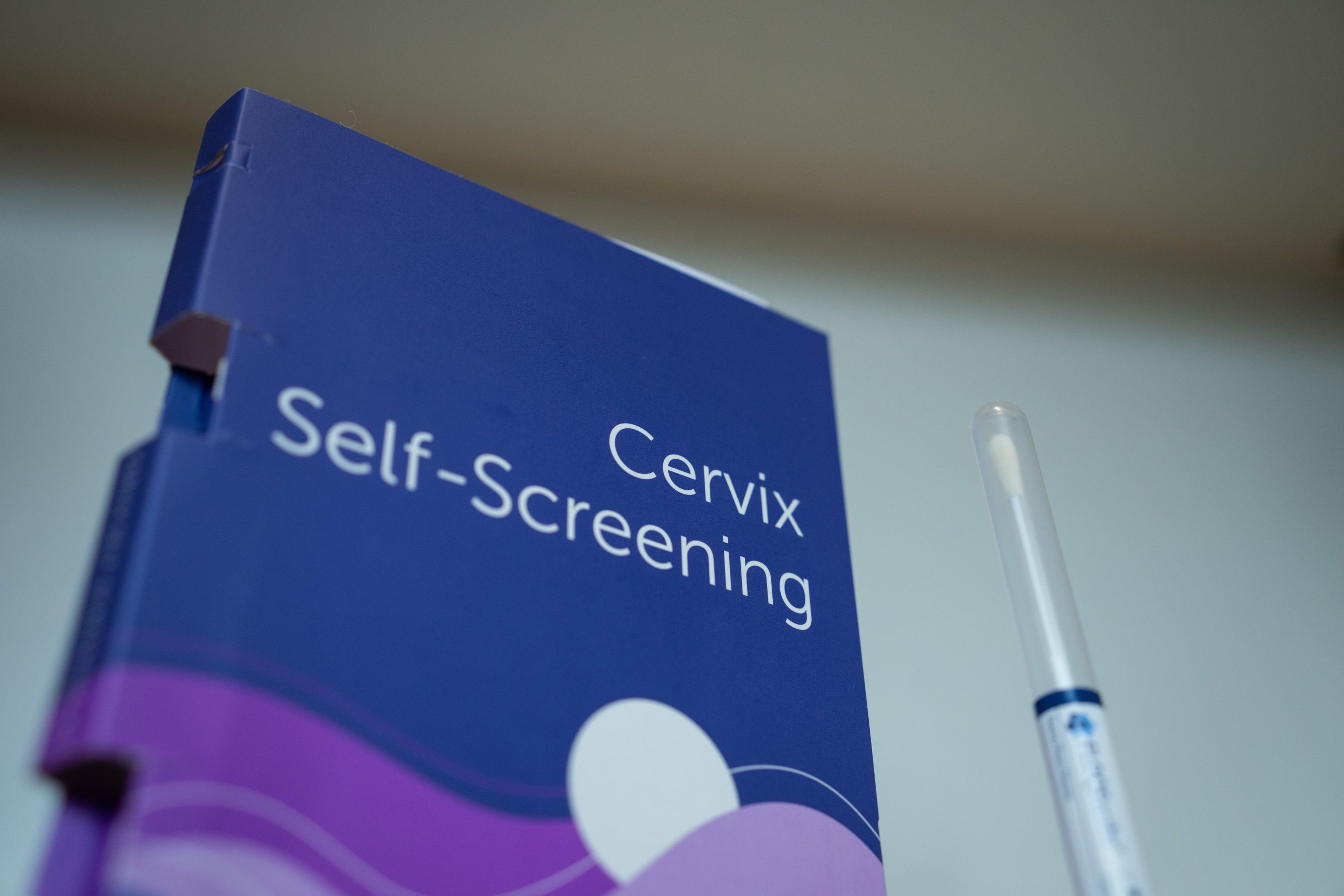Health
Manitoba announces 11 new cases of COVID-19 on Tuesday – CTV News Winnipeg


WINNIPEG —
Provincial health officials announced 11 new cases of COVID-19 in Manitoba on Tuesday.
Dr. Brent Roussin, the province’s chief provincial public health officer, made the announcement Tuesday afternoon.
With the new cases, Manitoba has had 1,349 since early March.
Of the new cases, one is in the Interlake-Eastern Health Region, two cases are in the Southern Health Region, and eight cases are in the Winnipeg Health Region.
There are 393 active cases of COVID-19 and 940 people have recovered.
There are currently 13 people hospitalized and three people are in intensive care.
The death toll remains at 16.
On Monday, 1,219 tests were completed, bringing the total to 148,537 since early February.
CASES AT CARE HOMES
Roussin said the COVID outbreak at the Bethesda Place care home remains at 13, while the Assiniboine Centre is now at 10 cases. Of the cases, three cases involve staff, and seven involve patients.
Fairview Care Home has three cases, all of which are staff members.
Rideau Place has two staff members who have COVID-19.
Beacon Hill Lodge has two cases, both among staff members.
Concordia Care Home and Donwood Group Elderly Persons Housing both have one case each. The case in Concordia involves a staff member, while a resident at Donwood has COVID-19.
Health
Nunavut sets up mobile tuberculosis clinic in Naujaat as outbreak grows


|
|
3 have died since outbreak began, 21 diagnosed with active TB
Nunavut’s Health department has opened a community-wide mobile testing clinic in Naujaat, in the hopes of testing as many people as possible for tuberculosis.
It’s been almost a year since a TB outbreak was first declared in the community of 1,200 people on May 16, 2023.
Kevin Tegumiar, Naujaat’s mayor, said the hamlet has been asking for such a clinic for several months.
“Without accurate numbers, we’re not really sure where we are. This clinic will help clear things up,” Tegumiar said.
Tegumiar said three Naujaat residents have died since the outbreak began in the community. Nunavut’s Health department confirmed those numbers in a recent interview with CBC.
Since January 2023, 21 people in Naujaat have been diagnosed with active TB.
Another 118 others have been diagnosed with latent TB, according to the department, which is almost double the number reported in November last year.
Hundreds of tests
Health officials have set a goal to test 1,000 people in Naujaat for TB by the end of the clinic, on May 30.
“We hope that every one of them are coming and get screened during the time that we are here,” said Ekua Agyemang, Nunavut’s deputy chief public health officer. “When TB is identified early, the disease is very easy to treat in the community.”
The Health department said they will deploy a team of health-care workers, including a doctor, four nurses, an epidemiologist, a radiology technician and laboratory technician.
Canada’s chief public health officer, Dr. Theresa Tam, will also visit Naujaat this week as part of a tour alongside Nunavut Tunngavik Inc. officials and the territory’s health minister. Tam will also visit Pond Inlet and Iqaluit.
“Though TB will be a focus of the entire visit, Dr. Tam will also meet with community groups and organizations to discuss homelessness, health education, mental health, and health research initiatives in Nunavut, among other topics,” a news release from NTI said.
Agyemang said in February, the department visited schools and organized a community event to raise awareness about tuberculosis in Naujaat.
Two other outbreaks
Two other TB outbreaks are still ongoing in Pangnirtung and Pond Inlet.
A screening clinic was held in Pangnirtung last fall, which allowed about 70 per cent of the population to be tested.
“There’s definitely ongoing work that still needs to be done, but at this point in time, they’re at a good place in Pangnirtung,” Agyeman said.
Agyeman said at this point, the department does not intend to hold a clinic in Pond Inlet. She also could not provide specific information about the number of cases in the community.





Health
Experts say Canada’s cancer screening guidelines are outdated


|
|
A group of doctors say Canadian cancer screening guidelines set by a national task force are out-of-date and putting people at risk because their cancers aren’t detected early enough.
“I’m faced with treating too many patients dying of prostate cancer on a daily basis due to delayed diagnosis,” Dr. Fred Saad, a urological oncologist and director of prostate cancer research at the Montreal Cancer Institute, said at a news conference in Ottawa on Monday.
The Canadian Task Force on Preventive Health Care, established by the Public Health Agency of Canada, sets clinical guidelines to help family doctors and nurse practitioners decide whether and when to recommend screening and other prevention and early detection health-care measures to their patients.
Its members include primary-care physicians and nurse practitioners, as well as specialists, a spokesperson for the task force said in an email Monday.
But Saad and other doctors associated with the Coalition for Responsible Healthcare Guidelines, which organized the news conference, said the task force’s screening guidelines for breast, prostate, lung and cervical cancer are largely based on older research and conflict with the opinions of specialists in those areas.
For example, the task force recommends against wide use of the prostate specific antigen test, commonly known as a PSA test, for men who haven’t already had prostate cancer. Saad called that advice, which dates back to 2014, “outdated” and “overly simplistic.”
The task force’s recommendation is based on the harms of getting false positive results that lead to unnecessary biopsies and treatment, he said.
But that reasoning falsely assumes that everyone who gets a positive PSA test will automatically get a biopsy, Saad said.
“We are way beyond the era of every abnormal screening test leading to a biopsy and every biopsy leading to treatment,” he said, noting that MRIs can be used to avoid some biopsies.
“Canadian men deserve (to) have the right to decide what is important to them, and family physicians need to stop being confused by recommendations that go against logic and evidence.”
Dr. Martin Yaffe, co-director of the Imaging Research Program at the Ontario Institute for Cancer Research, raised similar concerns about the task force’s breast cancer screening guideline, which doesn’t endorse mammograms for women younger than 50.
That’s despite the fact that the U.S. task force says women 40 and older may decide to get one after discussing the risks and benefits with their primary-care provider.
The Canadian task force is due to update its guidance on breast cancer screening in the coming months, but Yaffe said he’s still concerned.
“The task force leadership demonstrates a strong bias against earlier detection of disease,” he said.
Like Saad, Yaffe believes it puts too much emphasis on the potential harm of false positive results.
“It’s very hard for us and for patients to balance this idea of being called back and being anxious transiently for a few days while things are sorted out, compared to the chance of having cancer go undetected and you end up either dying from it or being treated for very advanced disease.”
But Dr. Eddy Lang, a member of the task force, said the harms of false positives should not be underestimated.
“We’ve certainly recommended in favour of screening when the benefits clearly outweigh the harms,” said Lang, who is an emergency physician and a professor at the University of Calgary’s medical school.
“But we’re cautious and balanced and want to make sure that we consider all perspectives.”
For example, some men get prostate cancer that doesn’t progress, Lang said, but if they undergo treatments they face risks including possible urinary incontinence and erectile dysfunction.
Lang also said the task force monitors research “all the time for important studies that will change our recommendations.”
“And if one of them comes along, we prioritize the updating of that particular guideline,” he said.
The Canadian Cancer Society pulled its endorsement from the task force’s website in December 2022, saying it hadn’t acted quickly enough to review and update its breast cancer screening guidelines to consider including women between 40 and 50.
“(The Canadian Cancer Society) believes there is an obligation to ensure guidelines are keeping pace with the changing environment and new research findings to ensure people in Canada are supported with preventative health care,” it said in an emailed statement Monday evening.
Some provinces have implemented more proactive early detection programs, including screening for breast cancer at younger ages, using human papillomavirus (HPV) testing to screen for cervical cancer and implementing CT scanning to screen for lung cancer, doctors with the Coalition for Responsible Healthcare Guidelines said.
But that leads to “piecemeal” screening systems and unequal access across the country, said Dr. Shushiela Appavoo, a radiologist with the University of Alberta.
Plus, many primary-care providers rely on the national task force guidelines in their discussions with patients, she said.
“The strongest association … with a woman actually going for her breast cancer screen is whether or not her doctor recommends it to her. So if her doctor is not recommending it to her, it doesn’t matter what the provincial guideline allows,” Appavoo said.
In addition to updating its guideline for breast cancer screening this spring, the task force is due to review its guidelines for cervical cancer screening in 2025 and for lung cancer and prostate cancer screening in 2026, according to its website.
Canadian Press health coverage receives support through a partnership with the Canadian Medical Association. CP is solely responsible for this content.





Health
Mobile Health Clinic in Bridgewater this week


|
|
Nova Scotia Health’s mobile primary care clinic. Photo: NS Health.
Nova Scotia Health’s mobile primary care clinic will be retunring to Bridgewater this week for two sessions on Wednesday and Sunday.
They will be setting up at the South Shore Community Health building located at 35 North Street. On Wednesday, April 17 the clinic will be open from 5:30 p.m. until 9:00 p.m., and on Sunday, April 21 it will operate from 9:30 a.m. until 3:00 p.m,.
The clinic is intended to help those without a family doctor, or those unable to book an appointment with their family doctor for non-urgent medical issues.
Types of concerns that may be addressed at the mobile primary care clinic include:
- Prescription refills or renewals (except for controlled substances)
- Minor respiratory symptoms
- Sore throat
- Earaches
- Fever
- Headache
- Rashes
- Minor gastrointestinal concerns (vomiting and diarrhea)
- Cough, flu, or cold symptoms
- Urinary tract infections
- Muscle pain





-



 Sports5 hours ago
Sports5 hours agoTeam Canada’s Olympics looks designed by Lululemon
-
Real eState13 hours ago
Search platform ranks Moncton real estate high | CTV News – CTV News Atlantic
-
Tech12 hours ago
Motorola's Edge 50 Phone Line Has Moto AI, 125-Watt Charging – CNET
-



 Investment21 hours ago
Investment21 hours agoSo You Own Algonquin Stock: Is It Still a Good Investment? – The Motley Fool Canada
-
Economy24 hours ago
China’s economy grew 5.3% in first quarter, beating expectations – CityNews Halifax
-



 Sports24 hours ago
Sports24 hours agoTiger Woods finishes Masters with his highest score as a pro, sets sights on coming majors – The Globe and Mail
-



 Science16 hours ago
Science16 hours agoSpace exploration: A luxury or a necessity? – Phys.org
-
News23 hours ago
Federal budget will include tax hike for wealthy Canadians, sources say – CBC.ca




